| Article ID | Journal | Published Year | Pages | File Type |
|---|---|---|---|---|
| 954844 | Social Science & Medicine | 2006 | 10 Pages |
Workplaces vary in their ability to recruit and retain workers. We introduce two new concepts which can be used as proxy measures of the relative attractiveness of a particular setting, where setting can be defined narrowly (e.g., a particular organization) or broadly (e.g., a sub-sector). “Stickiness” is defined as the transition probability that an employee stays in a given setting; “inflow” as the proportion of new employees. Using a longitudinal dataset of all nurses registered with the College of Nurses of Ontario, Canada 1993–2003, employment site was used to define consistent sectors and sub-sectors. Each nurse was assigned to one sector/sub-sector per year. Stickiness and inflow values were calculated for each sub-sector, and the trends across time were analyzed. Results show that despite shrinkage in the hospital sub-sectors, hospitals remained highly sticky. The expanding sub-sectors, in general, appear relatively unattractive to nurses; they couple medium/low stickiness with high inflow. Considerable variability across sub-sectors was evident. Stickiness and inflow were found to be useful as proxy measures of the relative attractiveness of the various sub-sectors of nursing employment over time. The concepts may be used for other workforces for which linked longitudinal data are available.
